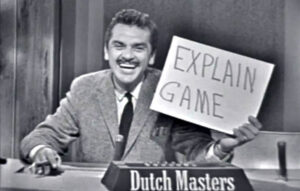Jacqueline Humphries is a critically acclaimed contemporary painter known for her abstract works that challenge the boundaries of traditional painting and embrace the aesthetic possibilities of technology, light, and gesture. Among her many influential pieces, Untitled (2012) stands out as a key example of her ability to merge abstraction with contemporary cultural concerns, inviting reflection on the role of painting in a digital world. This essay explores Untitled (2012) in the context of Humphries’ broader oeuvre, considering its formal elements, conceptual underpinnings, and its relevance in contemporary art discourse.
Jacqueline Humphries: An Overview
Jacqueline Humphries emerged in the 1980s and 1990s as an artist deeply engaged with the possibilities of abstract painting at a time when many critics were declaring its demise. Her work demonstrates a commitment to reinvigorating abstraction by integrating elements from contemporary culture, particularly the digital realm, into her artistic practice. Humphries’ paintings often feature gestural marks, reflective surfaces, and digitally influenced motifs, creating compositions that oscillate between traditional painterly concerns and the aesthetics of screens and technology.
Central to Humphries’ practice is her interest in how light interacts with the surface of the canvas. By incorporating metallic pigments, fluorescent colors, and reflective materials, her paintings actively engage the viewer’s gaze, shifting in appearance depending on the surrounding light and angle of observation. This dynamic quality makes her work inherently interactive and emphasizes the temporal experience of viewing.
Formal Analysis of Untitled (2012)
Untitled (2012) is an exemplar of Humphries’ ability to create a sense of movement and dimensionality within an ostensibly flat medium. The painting is a complex interplay of light, texture, and gestural marks, combining traditional painterly techniques with a contemporary sensibility.
Composition and Surface:
The composition of Untitled (2012) is non-representational, characterized by layers of overlapping marks that suggest both spontaneity and control. The surface of the painting is built up with layers of paint and metallic pigments, creating a rich textural quality that catches and reflects light. This reflective surface disrupts the viewer’s ability to see the painting as a static object, instead making it appear as though it is constantly shifting in response to its environment.
Gesture and Mark-Making:
The marks in Untitled (2012) are both gestural and mechanical, suggesting a tension between the hand of the artist and the impersonal processes of technology. Humphries’ characteristic use of stencils and screen-like patterns creates a sense of repetition and rhythm, evoking the grids and glitches of digital interfaces. At the same time, her gestural brushstrokes maintain a connection to the physical act of painting, grounding the work in a tactile reality.
Color and Light:
The palette of Untitled (2012) is dominated by metallic tones, punctuated by bright fluorescent accents that lend the painting a dynamic energy. The metallic pigments not only reflect light but also create a sense of depth, as though the painting’s surface is both a physical object and a portal into another dimension. This interplay between surface and depth underscores Humphries’ interest in the dualities of painting as both object and image.
Conceptual Underpinnings
While Untitled (2012) is formally compelling, its significance lies equally in its conceptual concerns. Humphries’ work frequently interrogates the relationship between painting and technology, exploring how the two mediums intersect and influence one another. In Untitled (2012), this exploration is evident in the painting’s digital aesthetic and its engagement with the materiality of light and surface.
The Digital Aesthetic:
Humphries is known for incorporating motifs and techniques that evoke digital imagery, such as pixelation, glitches, and screen-like patterns. In Untitled (2012), these elements create a dialogue between the physicality of painting and the immateriality of digital media. The work suggests a world in which the boundaries between the two are increasingly blurred, reflecting the pervasive influence of technology on contemporary life.
Materiality and Ephemerality:
One of the most striking aspects of Untitled (2012) is its emphasis on materiality—its surface is visibly textured, and its metallic pigments emphasize the physical presence of the painting. At the same time, the reflective qualities of the surface create an ephemeral quality, as the appearance of the painting changes depending on the viewer’s position and the surrounding light. This tension between materiality and ephemerality mirrors the dual nature of digital media, which is simultaneously tangible (through devices) and intangible (through virtual content).
Abstraction and Meaning
Humphries’ use of abstraction in Untitled (2012) resists easy interpretation, encouraging viewers to engage with the painting on a sensory and emotional level rather than searching for a fixed narrative. This openness to interpretation aligns with her broader interest in the fluidity of meaning in contemporary art and culture. By refusing to pin down a specific message, Untitled (2012) invites viewers to bring their own experiences and associations to the work.
The Role of Light in Humphries’ Work
Light is a central theme in Humphries’ practice, and Untitled (2012) is no exception. The reflective surface of the painting interacts with light in a way that makes it appear almost alive, constantly changing as the viewer moves around it. This dynamic quality challenges traditional notions of painting as a static medium, instead emphasizing the temporality of the viewing experience.
The use of metallic pigments and reflective materials in Untitled (2012) also draws attention to the role of light in perception. By manipulating how light interacts with the surface, Humphries forces viewers to become acutely aware of their own act of looking. This heightened awareness aligns with her interest in the phenomenology of art, emphasizing the active role of the viewer in the creation of meaning.
Context and Influence
Untitled (2012) can be situated within the broader context of contemporary abstraction, which has undergone significant transformations in recent decades. Humphries’ work reflects a larger trend among contemporary artists who are reexamining the possibilities of abstraction in a digital age. Her incorporation of digital aesthetics and emphasis on light and surface aligns her with artists such as Wade Guyton, whose work similarly bridges the gap between painting and digital media.
At the same time, Humphries’ work is deeply rooted in the history of abstract painting, drawing on the legacies of artists such as Jackson Pollock, Helen Frankenthaler, and Gerhard Richter. Her gestural marks and emphasis on process echo the concerns of Abstract Expressionism, while her exploration of surface and materiality aligns her with the concerns of postmodern painters.
Relevance in Contemporary Art Discourse
In an era dominated by screens and digital imagery, Untitled (2012) feels particularly relevant. The painting’s hybrid aesthetic, which combines traditional painting techniques with digital motifs, reflects the increasingly porous boundaries between the physical and virtual worlds. Humphries’ work challenges viewers to consider how these two realms intersect and influence one another, raising questions about the role of painting in a technology-driven culture.
Moreover, Humphries’ emphasis on light and temporality speaks to broader concerns in contemporary art about the nature of perception and experience. In a world where images are often consumed fleetingly, Untitled (2012) demands a slower, more deliberate mode of engagement. By drawing attention to the act of looking, the painting invites viewers to reconsider their relationship with visual media.
Impression
Jacqueline Humphries’ Untitled (2012) is a powerful example of her ability to push the boundaries of abstract painting, integrating traditional techniques with contemporary concerns. Through its dynamic interplay of light, surface, and gesture, the painting creates a sense of movement and dimensionality that challenges traditional notions of painting as a static medium. At the same time, its engagement with digital aesthetics and materiality raises important questions about the role of painting in a technology-driven world.
Ultimately, Untitled (2012) exemplifies Humphries’ ability to create works that are both visually compelling and conceptually rich. By situating her work at the intersection of abstraction and technology, she invites viewers to consider the evolving role of painting in contemporary culture, reminding us that even in an age dominated by screens, there is still room for the tactile, the physical, and the human.
No comments yet.








